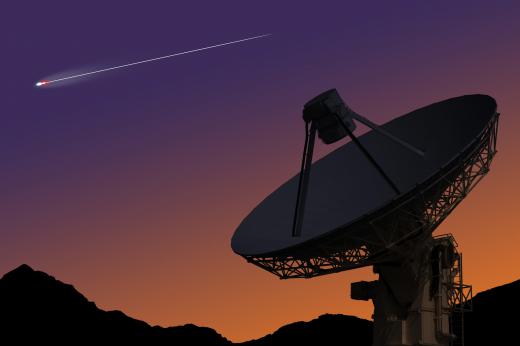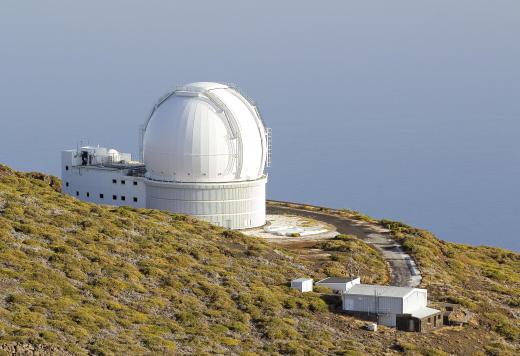What are Exoplanets?
 Mary McMahon
Mary McMahon
Extrasolar planets or exoplanets are planets which are found outside our own solar system. Study of the universe has revealed over 200 of these planetary bodies, and many more will probably continue to be found as human study of astronomy becomes even more sophisticated. Several universities and observatories have exoplanet research facilities which are dedicated to seeking out and identifying these planets, which is no mean feat when they are billions of light years away.
The presence of exoplanets was hypothesized by numerous scientists and astronomers for centuries before the existence of an exoplanet was finally confirmed in 1988. A group of Canadian astronomers managed to identify a mass which they believed was an exoplanet; after much debate over this initial discovery, their discovery was confirmed independently in 2003. Since 1988, a number of exoplanets have been discovered, primarily gas planets like Jupiter.

Researchers who work on exoplanets theorize that planets which are similar to Earth may be discovered at some point. Several likely candidates have been identified, providing hope that life forms may have arisen in other parts of the universe. The existence of more gas giants such as Jupiter is also promising, as some researchers believe that Jupiter helped to shield the Earth during the formation of the solar system, allowing it to become a planet which could sustain life. This function may be served by gas giants in other solar systems as well.

Locating an exoplanet is rather challenging, as the masses do not emit as much light as stars, making them difficult to find through telescope observation. Many advanced astronomical imaging techniques are used in the pursuit of exoplanets. Some researchers look for exoplanets by looking for characteristic changes in stars and other astrological phenomena, as planets leave distinctive signatures even if they cannot be seen. Occasionally, an exoplanet is found during transit, when it passes in front of its parent star, briefly dimming the star's light.

Unlike the planets in our solar system, exoplanets do not have terribly creative names. They are named after the stars that they orbit in the order of discovery, using a small lower case letter to denote each exoplanet, as in the case of gamma Cep b, a relatively nearby exoplanet. It should be stressed that exoplanets are not named in the order of proximity to the parent star; they are named in order of identification by astronomers. The exact properties of many exoplanets are unknown, since it is difficult to observe details such as signs of life at such a great distance. Scientists hope to some day visit these planets for themselves.
AS FEATURED ON:
AS FEATURED ON:













Discussion Comments
Wow, I had no idea that the exoplanet count was so high! I can't believe they've found over 200 of them. I guess I must not pay close attention to astronomy related news, because I thought they had only found a few exoplanets.
Anyway, I wonder if we will ever be able to explore any of these other planets? At this point we barely have the capacity to explore the planets in our own galaxy because of how long it takes us to get there.
@Ted41 - Just because they haven't discovered planets that have air and water on them doesn't mean that none of them are habitable. I think it's completely possible that other forms of life have arisen that are totally different from life here on earth.
After all, if evolution is true, isn't it possible for other life forms to have evolved to suit the environments on other planets?
@sunnySkys - Well, let's not get ahead of ourselves on the whole "life on other worlds" thing. After all, they have exactly discovered any habitable exoplanets yet!
Honestly though, I think the discovery of exoplanets is still interesting, even if it doesn't mean there are aliens out there. Realizing that there are planets outside of our galaxy definitely expands our worldview and lets us know there are a lot of things out in the universe to explore. And probably a lot of things we haven't even discovered yet!
I remember when the first exoplanet was confirmed in 2003. I saw a magazine that had an article about exoplanet news on the front cover and I bought it in a hurry! I've always been a huge science fiction fan, and the idea of planets outside our solar system kind of fascinates me.
I definitely believe there are other life forms out there, and I think the discovery of exoplanets is a step in the right direction to discovering other life in our universe. After all, where there is planet, there is at least the possibility of life, right?
Post your comments